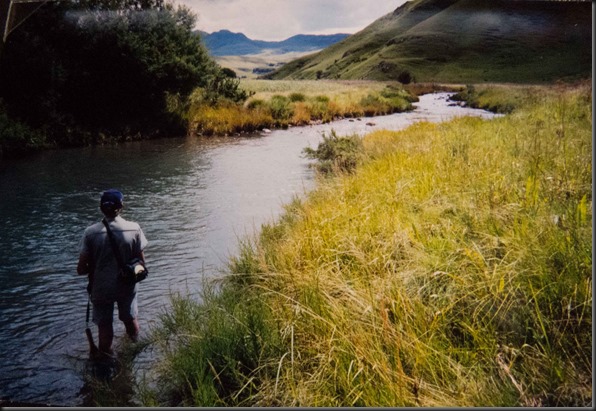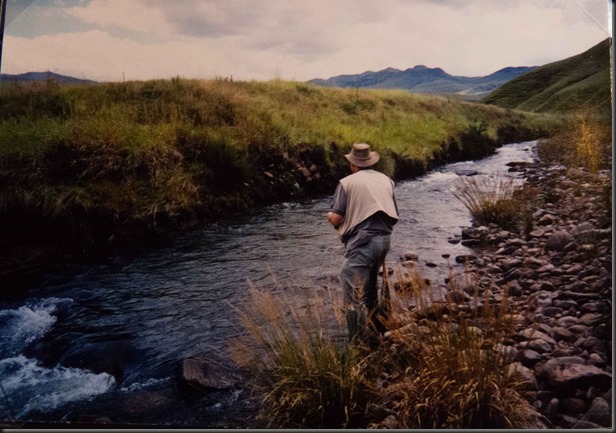It was March. The grass seeds were suspended high on tall bent stems, their weight barely sustainable in the heavy morning dew. Their greenness was still in them, but not for much longer. A pale duskiness was creeping into the veld from the base of each plant, and replacing the verdancy of mid summer. Heavy rain had swept across the upper reaches of the Ndawana that week, but it was not a summer rain. The weighty black clouds hung low over the quiet veld, and cast shadows that were cool. Brief spells of bright sun were warm, but failed to make us sweat, as we moved up the valley.
The stream showed signs of milkiness in the deepest pools, but as the morning wore on, and we got further up, I was certain that any colour in the water had disappeared. The small rushing stream cut deep and clear through dark soils and rocky ground. It’s slender threaded path down the valley ran black in the shade of high banks, and sparkled in flurries of white water, lit and highlighted by passing sunlight patches.
I was fishing a Zak under an indicator. A small tussled fly, that looked sufficiently beaten-up to be appetising. The yarn indicator was greased and floating high. Conditions were good and I should have been hooking fish at will. I was hooking fish at will in fact. I just wasn’t holding onto them. My rig was wrong. My diary suggests that the indicator was too far from the fly. That may have been it. Whatever the problem was, I was out of sorts. I vaguely remember that the tippet was too long and hinging under the weight of the heavy fly. I was fishing 4X in an attempt to match the subtleties of the small stream, but it was too limp for the weight I was attempting to throw.
PD on the other hand was not only hooking fish at will: he was landing them too. He was on form. The journal records that he landed “about twenty Rainbows”. He was flicking his fly sharply ahead into the quick runs and riffles and staying in touch with the fly without pulling it too straight and inviting drag.
I stood behind him at a pretty run and watched him pull several fish from the same spot. I took a picture. He fished.
Later I went higher up on my own and found fish rising to a very small mayfly. I don’t remember what pattern I tried, but it was just one pattern. I didn’t change the fly. I cast it repeatedly with limited result.
I ended the day on three fish. My diary entry is brief to the point that it is not descriptive. I was off form, and when my tackle wasn’t right, I didn’t sit on a rock and correct it. When I didn’t have the right mayfly pattern, I didn’t try others. When I filled in my log, I scrawled briefly, and put it away.
Art and poetry don’t get produced on demand. Neither does text book fly-fishing. You have to be in the groove.


2 Responses
Nicely written piece with an important message, If what you are doing isn’t working then change something. Time spent getting your leader right, your flies right, the drifts right is rarely wasted.
Thank you Tim.
Indeed: five minutes re-doing the set-up can make the difference between a 3 fish day and a 20 fish day.
But they are all memorable. That day was in 2005.